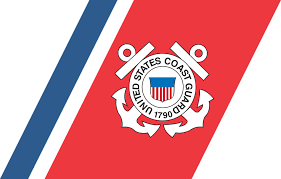Lower Mississippi River (LMR) Dredging Update 73019
The Corps of Engineers Mississippi Valley New Orleans (MVN) continues dredging operations in response to active shoaling deposited by historic long-term high river stages (record flood event created by record precipitation levels). There are three hopper dredges and two cutterhead dredges working in the area of Southwest Pass and three dustpan dredges working on the Crossings Above New Orleans. The MVN did not receive any bids from the dredge contractors to the advertisement of Southwest Pass Hopper Dredge Rental Contract #12-2019 opened today, Tuesday, July 30, 2019.
TRANSIT RESTRICTIONS AT SOUTHWEST PASS (SWP):
- The Bar Pilots maximum draft recommendation was increased to 43 feet (freshwater) at 1000 hours on Friday, July 19, 2019.
- The Crescent River Port Pilots maximum draft recommendation of 44 feet (freshwater) for their route was reestablished after Hurricane Barry.
- The Federal Pilots maximum draft recommendation was also increased to 43 feet (freshwater) on Friday, July 19, 2019.
The controlling maximum draft for all vessels transiting Southwest Pass as implemented on Friday, July 19, 2019 remains 43 feet freshwater (Bar and Federal Pilots).
INDUSTRY HOPPER DREDGE(S) IN SOUTHWEST PASS (SWP):
NEWPORT: The industry hopper dredge NEWPORT (Manson Construction) is dredging at Cubits Gap (Mile 4.0 Above Head of Passes [AHP] to Mile 2.0 AHP). The NEWPORT is dredging under Southwest Pass Hopper Dredge Rental Contract #8-2019, this contract could be completed by the end of August but the MVN can exercise options to extend this contract.
STUYVESANT: The industry hopper dredge STUYVESANT (Dutra Group) continues dredging on assignment at the Head of Passes (Mile 1.5 AHP to Mile 0.5 Below Head of Passes [BHP]). The STUYVESANT began dredging under Southwest Pass Hopper Dredge Rental Contract #10-2019 on June 14, 2019 and is expected to continue dredging on this contract until October 1, 2019.
GOVERNMENT HOPPER DREDGE(S) IN SOUTHWEST PASS (SWP):
WHEELER: MVN’s hopper dredge WHEELER continues dredging from Mile 0.5 BHP to Mile 1.5 BHP under Red Flag Emergency Call Out #6-2019 (45-days).
CUTTERHEAD DREDGE(S) IN SOUTHWEST PASS (SWP):
C.R. McCASKILL: Weeks Marine’s cutterhead dredge C.R. McCASKILL commenced dredging on July 24, 2019 from Mile 5.0 BHP to Mile 6.0 BHP on the western side of the channel under Southwest Pass Cutterhead Dredge Rental Contract #2-2019.
CAPTAIN FRANK: Weeks Marine’s cutterhead dredge CAPTAIN FRANK commenced dredging from Mile 14.3 BHP to 18.0 BHP on July 28, 2019 also under Southwest Pass Cutterhead Dredge Rental Contract #2-2019.
CUTTERHEAD DREDGE(S) IN THE HOPPER DREDGE DISPOSAL AREA (HDDA):
R.S. WEEKS: The industry cutterhead dredge R.S. WEEKS (Weeks Marine) continues dredging at the HDDA, all material is being beneficially used in the Pass A’Loutre Wildlife Management Area (PALWMA). The contract requires the removal of 12 million cubic yards (mcy) of material, approximately 5.3 mcy of material have now been beneficially placed in the PALWMA from the HDDA.
DUSTPAN DREDGE(S) ON THE CROSSINGS ABOVE NEW ORLEANS:
WALLCE McGEORGE: The industry dustpan dredge WALLCE McGEORGE continues dredging the central 250 feet of channel at Baton Rouge Front (Mile 231.5 AHP). The industry dustpan dredge commenced dredging on the Crossings on May 9, 2019.
HURLEY: The Corps dustpan dredge HURLEY continues dredging operations on the central 250 feet of channel at Red Eye Crossing (Mile 224 AHP). The government dustpan dredge commenced dredging on the Crossings on May 4, 2019.
JADWIN: The Corps dustpan dredge JADWIN continues dredging on the central 250 feet at Belmont Crossing (Mile 154 AHP). The government dustpan dredge commenced dredging on the Crossings on June 27, 2019.
The Carrollton Gauge (New Orleans) reading at 1600 hours was 14.60feet, with a 24-hour change of – 0.15 feet.
The Baton Rouge Gauge reading at 1600 hours was 37.33 feet, with a 24-hour change of – 0.39 feet.
The graph below is reproduced from NOAA’s National Weather Service website and represents an experimental product to account for the complexity of accurately predicting long-range precipitation. This forecast projects stage levels based on expected precipitation for 2 days (top) and 16 days (bottom) and was developed within the North American Ensemble Forecast System (NAEFS) computer model and highlights Quantitative Precipitation Forecasts (QPF). Along with the forecasts, a shaded area is also provided to indicate uncertainty for the forecast each day in the future. These plots are experimental and not an official forecast product.


